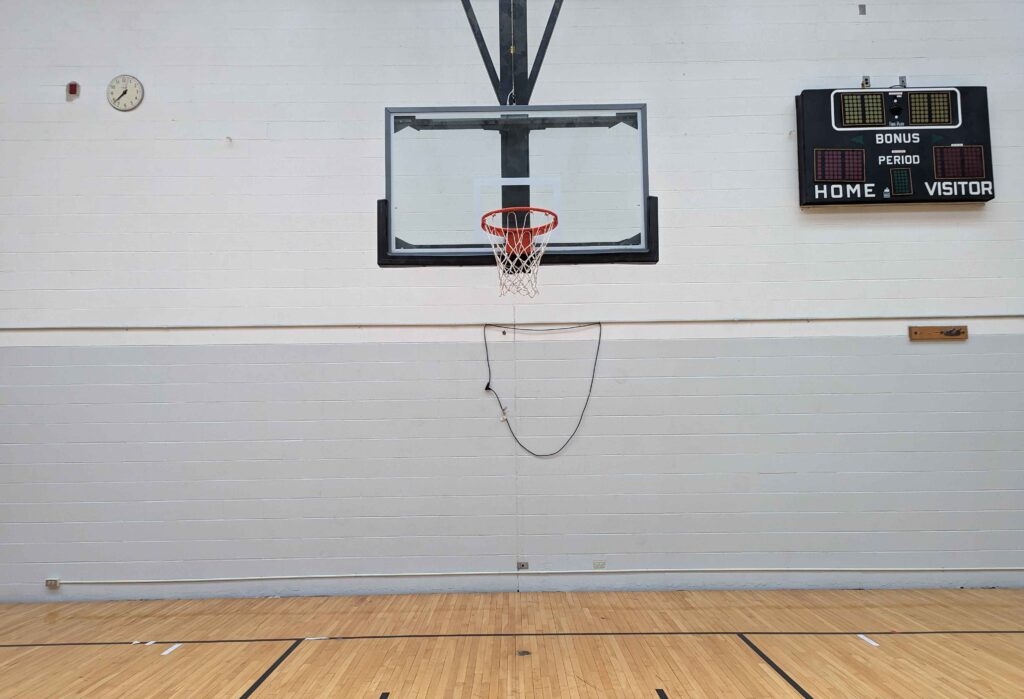
Basketball Journeys Starting at Buffalo State College
Your work is never done as a writer and an author. There are endless edits to your blog posts, essays and books. Ideas further come to you out of the blue sometimes even after finishing a work. While making the final edits to The Engineers: A Western New York Basketball Story, I decided to create this hopefully last promotional essay. I created a page on my writer’s blog for the book. There is a summary of it and numerous promotional essays and videos. This essay involves the start of my basketball journey as a player-manager.
I want to salute the members of the Campus West Alumni Group on Facebook. Not everyone went on to Hutch-Tech High School or played varsity basketball. Most of the group has been supportive of what I have shared there. I have further tried to make sure that everything I have shared is germane to the group. I thought the members of the group would find this particular essay to be both fun and nostalgic.
I wrote this essay though because my basketball journey started at Campus West/College Learning Laboratory. Campus West was both a school and a training ground for education majors at Buffalo State College where our school was located. It was many other things as will be described. Our school sat on the western-most part of the campus, hence the name.
A Player-Manager
“Okay here is the deal Dunbar,” Mr. Cook said in his stern and low-pitched voice one day after tryouts. He always addressed me by my last name. He peered at me almost suspiciously out of the corner of his eyes. “I am going to keep you on the team as a player-manager! You are not going to play, but you will be on the team, and will come to practices. You may potentially get into some games.”
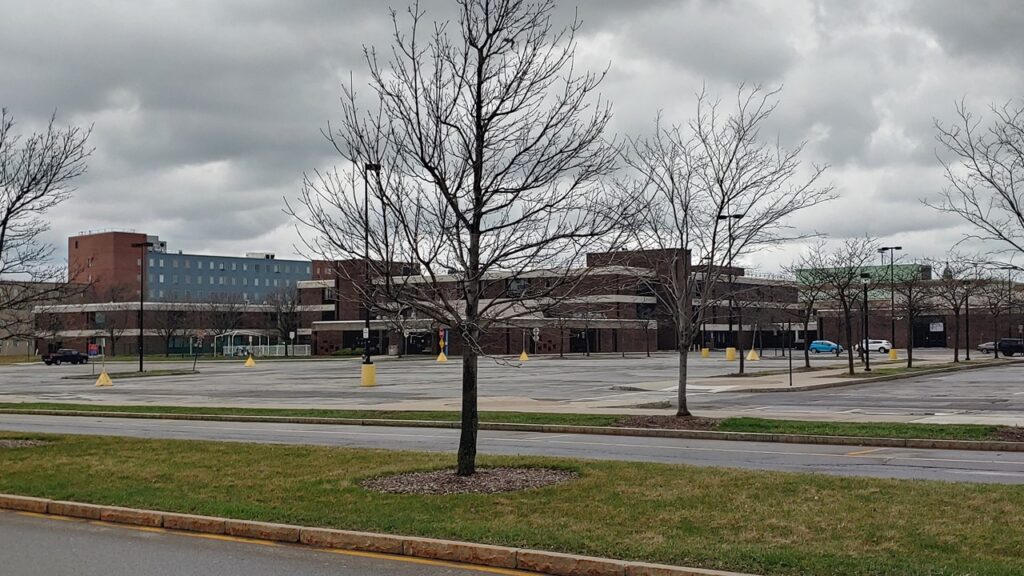
Mr. Cook watched me struggle during tryouts and mercifully gave me a roster spot. It is something I remember to this day as I wanted one badly. Nothing looked more appealing to me than playing on the basketball team at our school at that time. I also wanted to be a part of a brotherhood. He knew me from years of gym classes. I attended Campus West since the first grade and he saw me grow up over the years. I will always be grateful to him for putting me on the team my seventh grade year. I started following the National Basketball Association (NBA) closely that year. It was the year Michael Jordan hit the shot against Cleveland. It was the Golden Age of the NBA and basketball in general. It was a magical time.
Surprise. You just read an excerpt from an early draft chapter from The Engineers: A Western New York Basketball Story. The start of every journey is important. My basketball journey did not start at Hutch-Tech High School, but instead at the Campus West/College Learning Laboratory, Campus West for short. It was set in motion by the boys’ basketball coach there at the time.
Our Middle School Basketball Coach
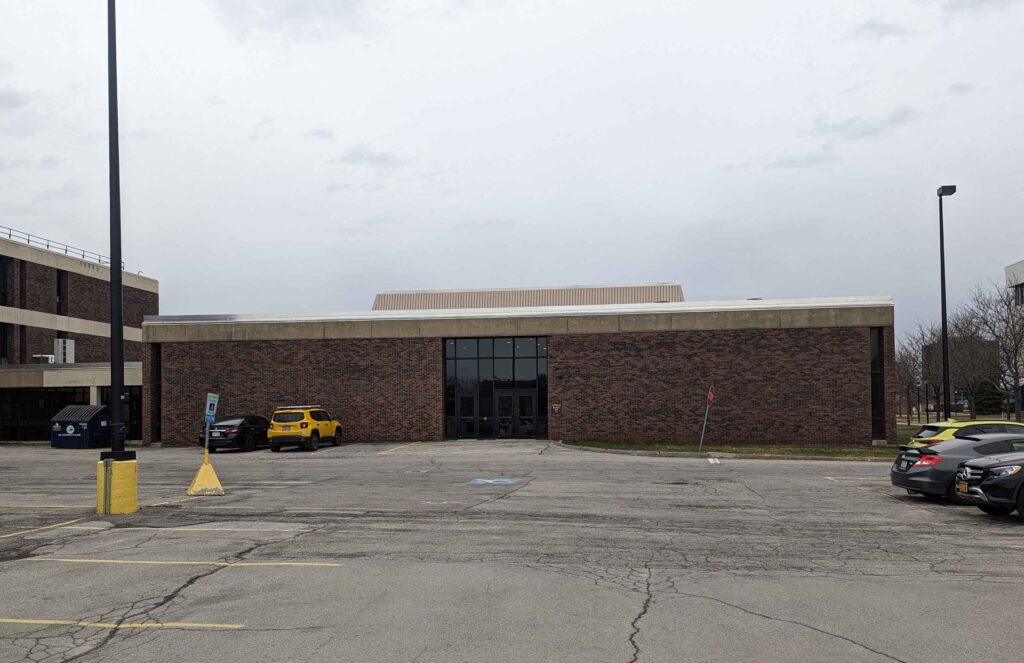
Our Campus West Boys’ Basketball Team was coached by Mr. Walter James Cook. He was the Skipper for the team for most of my years at the school. I seldom recall anyone referring to him as Coach Cook, only Mr. Cook. He was a tall and thin Physical Education teacher with brownish-black hair. He frequently wore t-shirts and sweatpants. He often wore his blue and gold Empire State Games sweat suit at school. Finally he wore a pair of low cut 1980s-style Converse or Nikes. Mr. Cook could have been from Western New York, a small town in Middle America or somewhere out west.
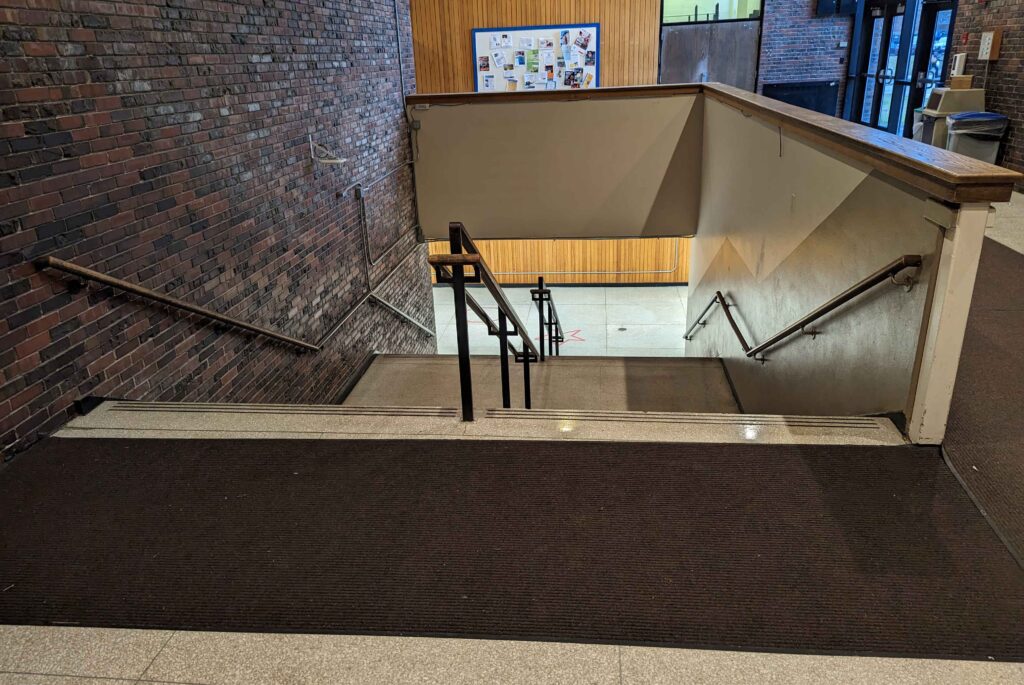
Mr. Cook saw that I had one of the lowest experience and skill levels of all the boys trying out my seventh grade year. With my chubby build, he also saw my struggles with the cardiovascular demands of tryouts and basketball in general. I was easily winded when running sprints in our gym and the stairs immediately outside of it. Still though, he decided to give me a spot on the Campus West Boys’ Basketball Team.
The Campus West Gym
Much of The Engineers: A Western New York Basketball Story takes place in the gyms in the Yale Cup. Most of them were abysmal and older. Our big gym at Hutch-Tech was a small box in the basement of our school. We had to split our practices with the girls’ team most afternoons. We had a smaller room with a hoop in it which was our small gym.
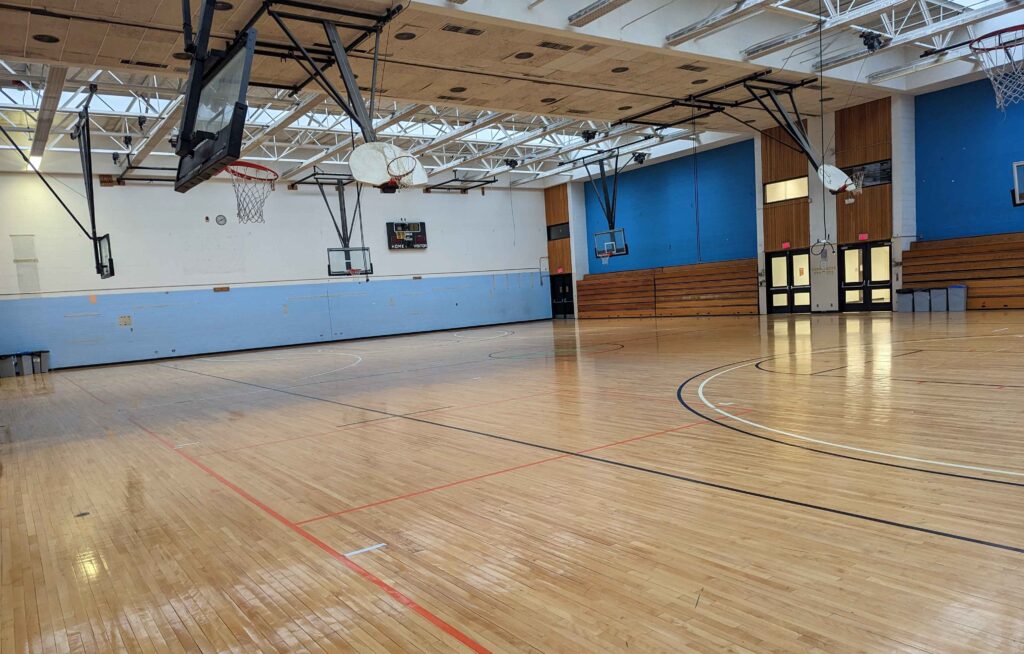
Campus West was a large central building with four wings. One of the wings was our gymnasium complex. Our main gym was vast, like those in the suburban and private schools. It had two main window-style backboards with several other retractable halfmoon backboards around the gym. It had wooden bleachers on both sides of the court to host large crowds. It was a large space that my maturing adolescent body had to get used to running around in. At practices, a curtain extended across half court so that Mr. Chritman’s girls’ team could practice on the other side.
A Mixture of Grade Levels
Our team would have formally been called a ‘modified’ team in one of the suburban or private schools. My best friend transferred to Cleveland Hill in Cheektowaga and I first heard the term from him. Our team nickname was the Bengals for the sports teams at Buffalo State College. I did not have any official duties as the name player-manager might imply. I simply practiced and sat at the end of the bench, watched and observed.
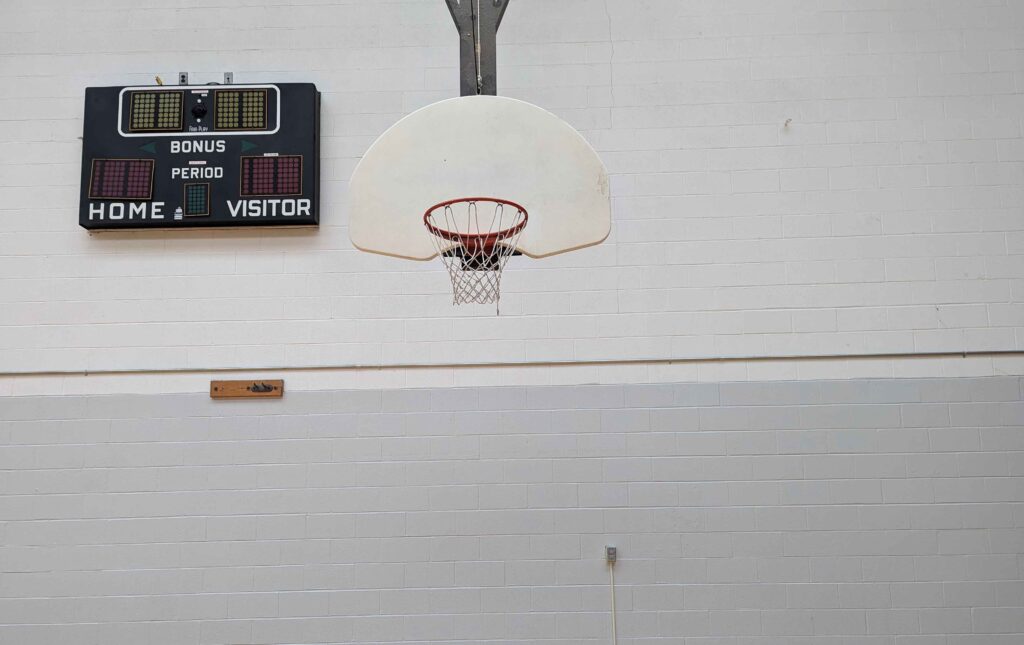
Our team was a mixture of seventh and eighth graders that year. Ronald Jennings from my class was one of our leaders that year. He was one of the 40 players I interviewed for my book. Ronald wore the No. 21 for the Atlanta Hawks’ Dominique Wilkins when we ordered our blue and white jerseys. I chose the No. 3 for the Boston Celtics’ Dennis Johnson. The other guys chose their numbers for any number of reasons. Jason Holman chose No. 33 for Larry Bird. He was one of a handful of white kids on the team, like most of the basketball teams in the Buffalo Public Schools.
Another fun aspect was the shorts that came with our uniforms. We wore the John Stockton-length shorts that year and the next year. Most teams did at that time and basketball fans will understand the reference. The Michael Jordan/Michigan Fab Five-length shorts had not yet started dominating the basketball world.
Sitting, Watching and Learning
“West Hertel is playing a zone against us,” one of my teammates observed in a game. It might have been John Barron or Marcus Perkins. I learned a lot that year watching from the bench. One of my big learning points involved zone defenses and how they worked. Zone defenses are used to prevent dribble penetration. They are valuable against teams that do not have outside shooters. They are also useful for coaches when multiple defensive players are slow footed and are liabilities in man-to-man defenses. In the latter defense, each player has an assignment and talking is critical. It was a key learning point for a novice like me.
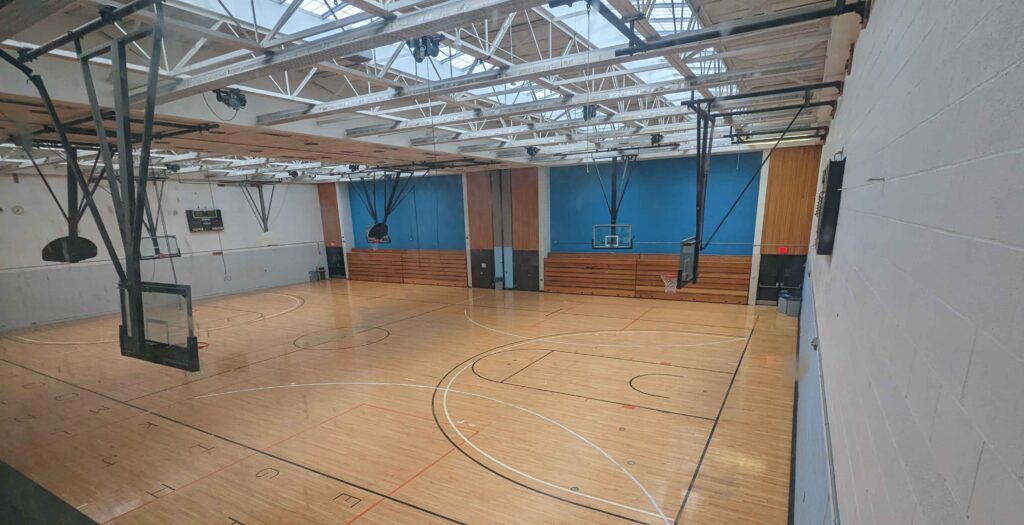
“Clarence needs to do a better job rebounding the ball!” Our tallest player was a kid I will call Clarence. He wore glasses in the eighth grade and stood 6’3”. That was tall for all of us at the time. I saw that there were taller players later in the Yale Cup. Clarence played the center position for us and was expected to rebound the ball and control the middle. He grabbed at the ball like a butterfly or a ping pong ball when going for rebounds which my teammates observed in several plays.
I learned a lot too just by talking with my teammates. John Barron was a fan of the Showtime Lakers and knew a lot about the NBA. One day he explained to me that players in the NBA had to be drafted. They simply could not try out as I unknowingly said in a conversation one day. He did not laugh at me though I am sure it sounded silly. When you are new to something, you just do not know until someone corrects you.
Team Camaraderie
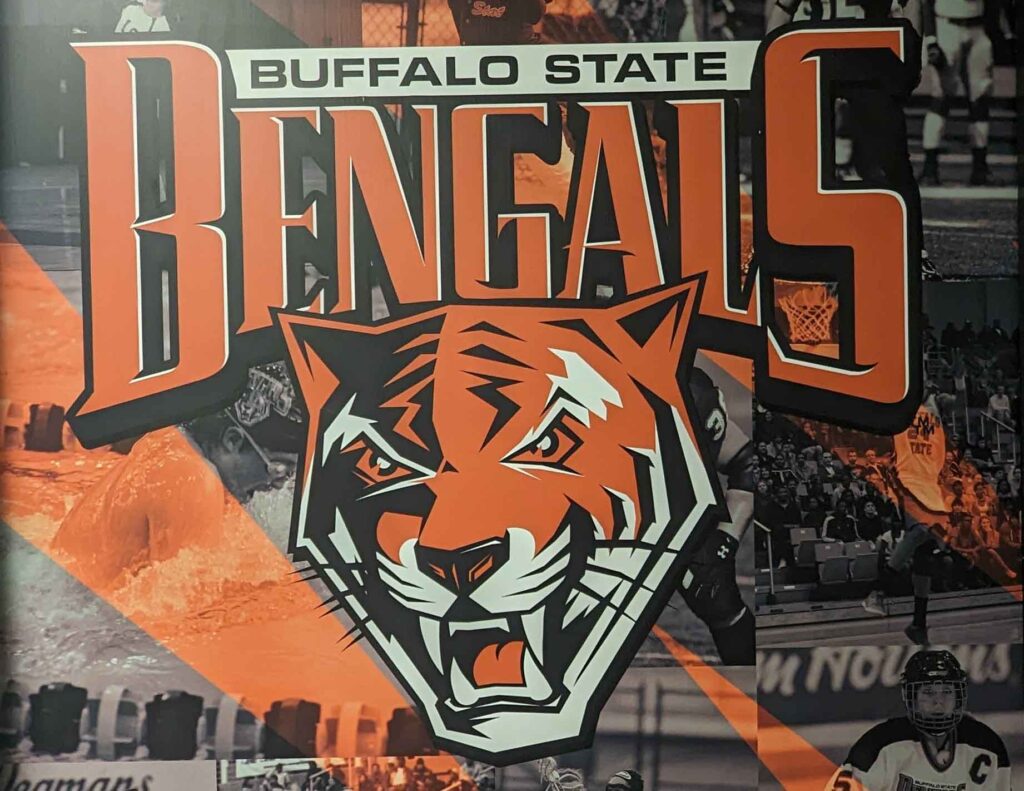
“The back of Anwar’s jersey says ‘DRA’,” Basheer Cross joked during my first year on the team. Our tanks tops read ‘Bengals’ across the front and curved over our numbers. Mr. Cook encouraged us to use nicknames on the back of our blue and white jerseys. I chose the nickname given to me by my Uncle Scottie, ‘Dr. A’ in honor of Dr. J in the NBA. Unfortunately, the manufacturer left off the period so it just said DRA. Basheer had a good time with it along with other teammates. Dion Frasier shared in the Campus West Facebook group that the same thing happened to him years earlier. That year I wore a pair of blue and white Converse sneakers and pulled my blue and white striped sox up over my calves.
“What is a Swingster? Is it a Chalk Line or a Starter jacket?” While waiting for the bus on our way to a game my eighth-grade year, some of the guys grabbed the collar of my white Chicago Bulls Swingster jacket. Starter and Chalk Line jackets were the popular college and professional sports jacket brands for young people at that time. I initially felt singled out but was later amused by it. There was quite a bit of healthy clowning of everyone. Our team had a strong camaraderie amongst the players. Years later I learned that camaraderie was an important ingredient to most successful teams.
Coming Back the Same Basketball Player
My first coach at Hutch-Tech High School was a ‘fundamentals’ coach so I know the difference when looking back at the coaching we received at Campus West. Mr. Cook knew a lot about fundamentals but there were probably time constraints in terms of what he could do with us after school. Coach Ken Jones packed as many drills and strategies as he could into those two and a half hours after school at Hutch-Tech. Those took place twice a day for some stretches of our basketball seasons from October to March.
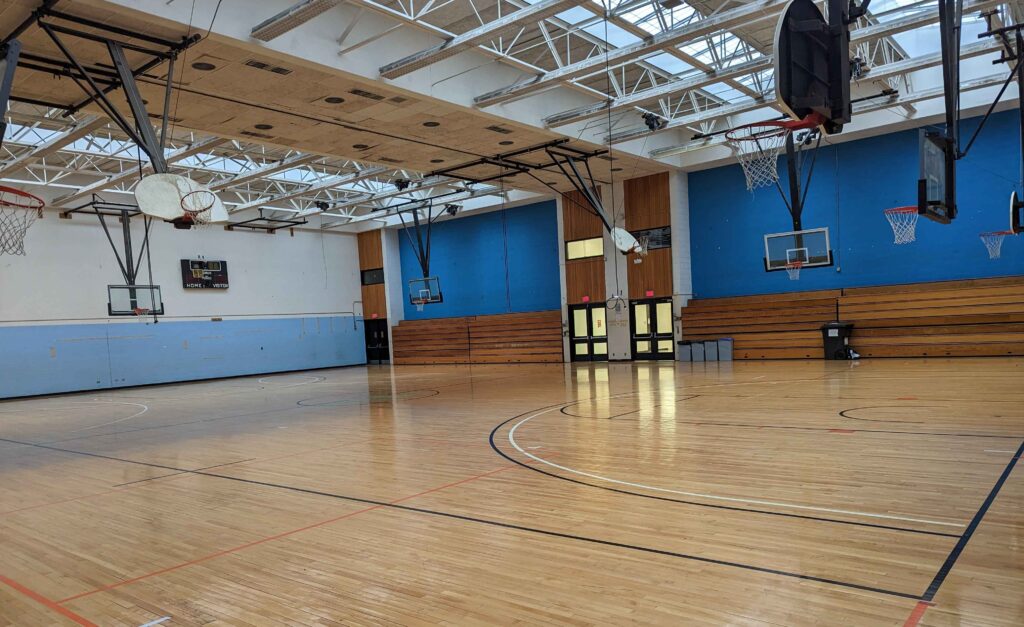
“I think we are finally starting to click a little bit,” Mr. Cook said, pacing in front of us in his t-shirt, sweatpants and Converse sneakers. We typically sat on the floor and listened to him talk between drills. The wood floor sharply creaked with every step. His comments about our team clicking was my first time hearing that reference for teams gelling chemistry-wise.
In the time he had with us after school, Mr. Cook taught some basics. I recall learning some iteration of the ‘motion’ offense. I also remember the ‘Three-Man Weave’ drill. There was not much in the way of individual skills development, or guidance for developing those skills outside of school though. I thus finished that season with no concrete plan to improve going into that summer of 1989. Most of my basketball playing consisted of neighborhood pickup basketball games and games of Twenty-One. I thus came back for my eighth-grade year close to the same player skill-wise.
When You Go On to Play Varsity Basketball
“When you go on to high school to play varsity basketball – ,” Mr. Cook often said during practices. Again he paced around in front of us talking about this and that. He talked about some amorphous nebulous thing called varsity basketball. But what was this varsity basketball?

He discussed it in terms of things that we would experience once we got to high school. It was like another world, or a wonderland but he seldom contrasted it to the level we were at. I will describe later that around the time I became a player-manager at Campus West, I was unaware of the great high school basketball being played in Western New York. There were a number of great players in our area, some of whom would go on to the national stage.
The next year Mr. Cook left for Riverside High School. We would reunite at Hutch-Tech High School my sophomore year. He took over for the late Coach Joseph Girard. Mr. Cook’s other specialties were swimming and volleyball. I served as a linesman for him for the girls’ volleyball team my senior year. He also smacked some of my shots around when playing pickup basketball in our tiny gym. He was not a bad player himself.
A New Coach Takes Over and More Lessons Learned
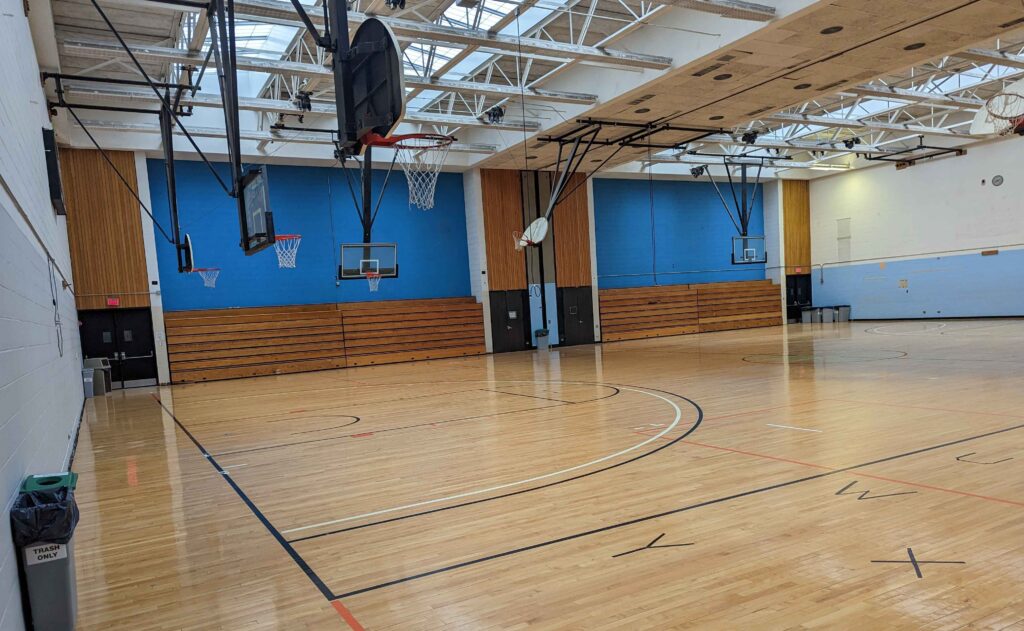
Mr. Dennis Rozlowski took over for Mr. Cook my eighth grade year at Campus West, and the overall feel of the team changed. Mr. Rozlowski looked kind of like a hippie. He had longer hair, a mustache and wore glasses. He typically wore a sweatshirt, shorts and sneakers. His overall approach was looser, and the team was now dominated by players from my eighth grade Class of 1990. He interestingly encouraged us to put our last names on the backs of our now orange jerseys instead of nicknames. This gave us a more business-like feel. That year I wore a pair of black Nike ‘Flight’ sneakers with my uniform.
I learned another important basketball, sports and life lesson that season. Age and time on the team did not necessarily determine skill level. While I had been on the team the previous year, a seventh grader named Muhajer Alwakeel joined our team and got regular playing time. Though a year younger, he was more developed, experienced and comfortable on the court than I was. He thus played more.
Going Up Strong and My First Basket
“Just go up strong,” Ronald Jennings said, encouraging me in gym class. I grabbed a rebound and used multiple pump fakes before laying the ball up that day. His underlying message was to play stronger around the basket and with less fear. His words stayed with me afterwards and were a major learning point early on.
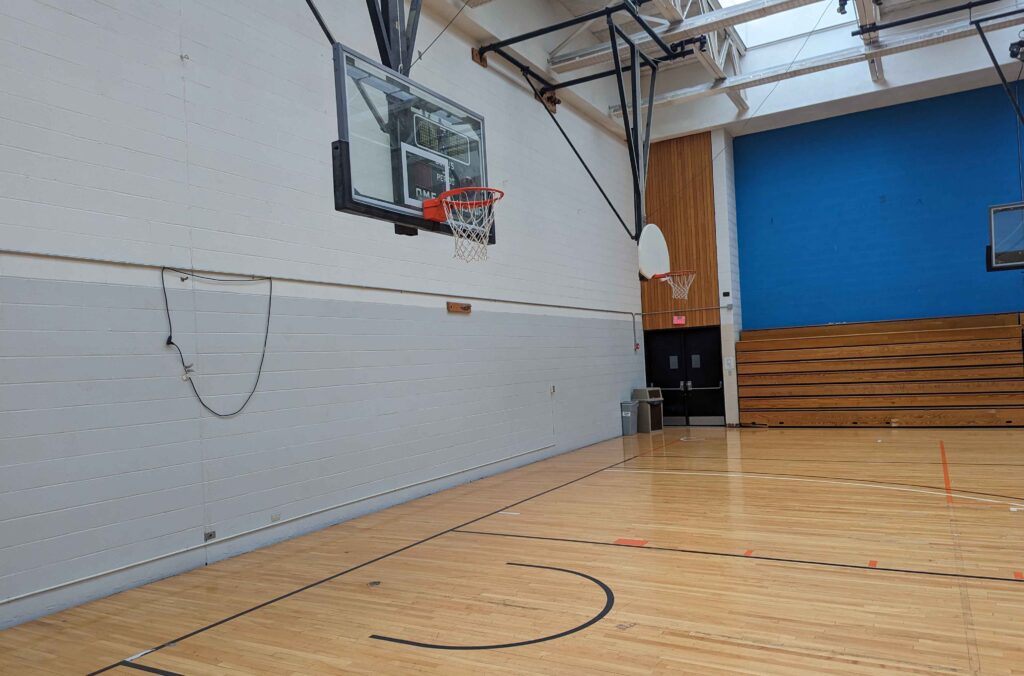
Ronald also assisted my first ever basket in an organized game. Mr. Rozlowski put me into a game after we established a large lead. On an offensive possession, Ronald advanced the ball into our half court. Our opponents were in a zone defense and I ran the baseline flashing with my hands up. While open on the right side of the basket, he threw me a two-handed over the head pass. I caught it in one motion and shot it. The ball dropped into the cylinder, rattled around and fell through the net for me.
“WAAR, WAAR, WAAR!” My Bengal teammates exploded on the bench at my accomplishment as I ran up the court slapping hands. ‘Waar’ was the nickname my classmates gave me by removing the first two letters from my first name. Most everyone had a nickname in my class that year. I exited the game within the next few minutes feeling good and on top of the world. Those were the only two points I scored that season.
My First Basket and Jason Rowe’s Revelation
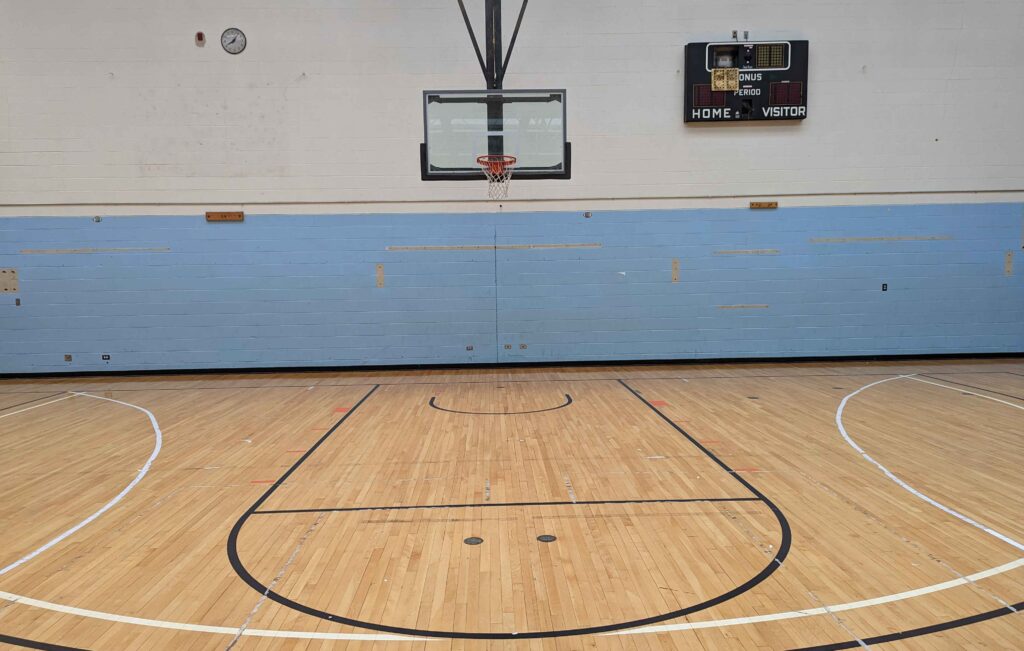
A couple of things come to mind looking back at my first basket at Campus West. First, it was a big deal for me to get those two points, not eight, not 10 points, not 16 points, but two points. I had not developed the competitive mentality to push myself further and to want more. I further did not know how to push myself to develop so that I could regularly play alongside Ronald and the other guys in a sustained way.
My interview with Buffalo Traditional basketball legend Jason Rowe caused me to think about this years later. Jason shared that he could not come home and say that he simply scored 10 or 12 points in a game. He had to show more. He had to produce and win games. Jason likewise came from a basketball family. He was immersed in the culture and trained hard at an early age. The bar was thus set very high for him and he developed a killer instinct on the court early on. I will discuss this later.
A Good Eighth-Grade Year
We had a good year that year winning the Public School Athletic League (PSAL) championship. Our season came to a tough ending though at the hands of a team led by Jeremiah Wilkes and Shareef Beecher. Their school might have been North Park. We lost to them first in our regular season finale. We then lost to them in the Gold Dome Tournament. The pair would go on to lead the Burgard Bulldogs for the next three to four years in the Yale Cup. After our final game, Mr. Rozlowski treated our team to McDonald’s which I enjoyed.
We had a sports assembly at the end of that season as most teams do. Ronald Jennings not surprisingly won the Most Valuable Player Award. There was one surprise though. I won the Most Improved Player Award. I could not believe it as I did not do much besides sit on the bench that year. Someone saw something though whether it was Coach Rozlowski, my teammates, or both. Someone thought I deserved the award. I always knew how to give effort regardless of the results. I similarly won the Best Practice Player Award two years later after my first year on the Hutch-Tech Boys’ Basketball Team. That was my sophomore year, the 1991-92 season.
Leaving Close To the Same Basketball Player and Developing

Even being on the team my eighth-grade year, I went on to Hutch-Tech as a bit of a project skill-wise. I wanted to play varsity basketball, but did not have a solid plan for development. Whose job was it to create that though?
The Buffalo News published a series of articles discussing why Buffalo did not produce many Division-1 college basketball players. The series was published the year after I graduated from Hutch-Tech prior to the 1994-95 season. A big factor was the lack of formal early developmental systems. These were the above mentioned modified and junior varsity teams (JV) to feed the varsity teams. We arguably had modified teams in Buffalo, but there was no formal JV program in the high schools for kids like me to go directly into for continued development.

Coach Ken Jones talked about the lack of ‘feeder’ systems extensively in our discussions before he died. The Ken Jones Basketball Camp was the first basketball camp I ever attended. I learned about it firsthand my freshman year as he was my coach and it was his camp. There were others around Buffalo but me and my family just did not know about them. In summary, my early basketball journey was impacted largely by personal circumstances just like other kids. We were each dealt different hands and had to do the best we knew how with them.
Mr. Amoroso, Derrick Coleman and the Syracuse Orangemen
“I LOVE Derrick Coleman from Syracuse. I tell you I just LOVE Derrick Coleman,” said Mr. Amoroso. Mr. Amoroso was a bearded, shorter, muscular Italian teacher. I do not recall what he taught at Campus West, but he was very excitable and playful. He beat up some of us boys playfully and regularly. He probably wanted to toughen us up, not something I think a teacher could do in modern times. He learned that I took an interest in basketball. He went on and on about some player named Derrick Coleman from Syracuse University some days. The school was two hours east going towards Albany where my father lived. They were coached by some guy named Jim Boeheim.
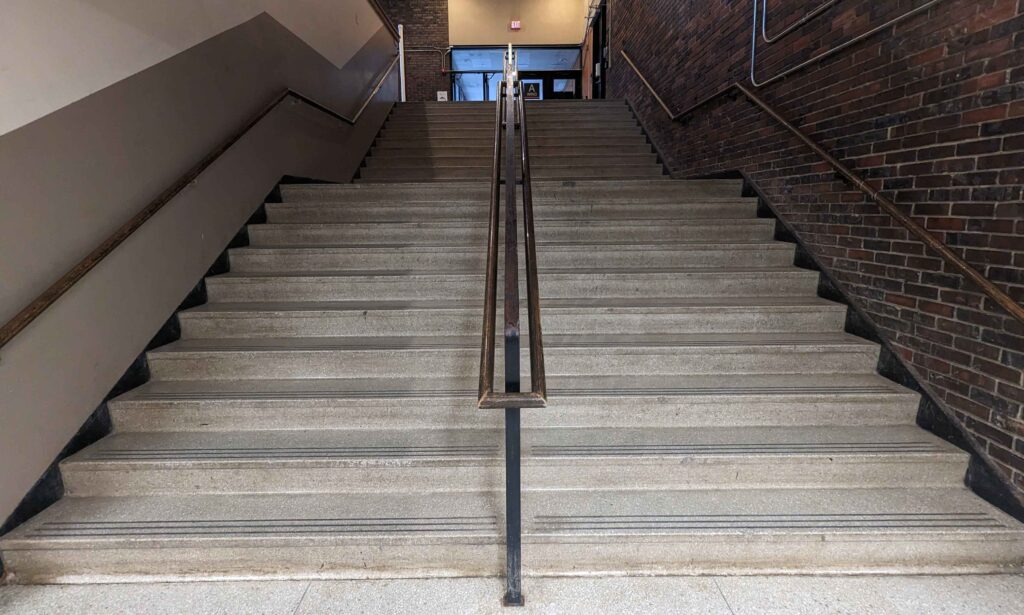
You just read another excerpt from The Engineers: A Western New York Basketball Story. When revising the book, I added Mr. Amoroso’s love for No. 44 Derrick Coleman for a number of reasons. First, Mr. Amoroso was a memorable teacher at Campus West. Secondly, I did not know who the best player from our nearest big time Division-1 college basketball program was at the time. This is something I would change if I could go back.
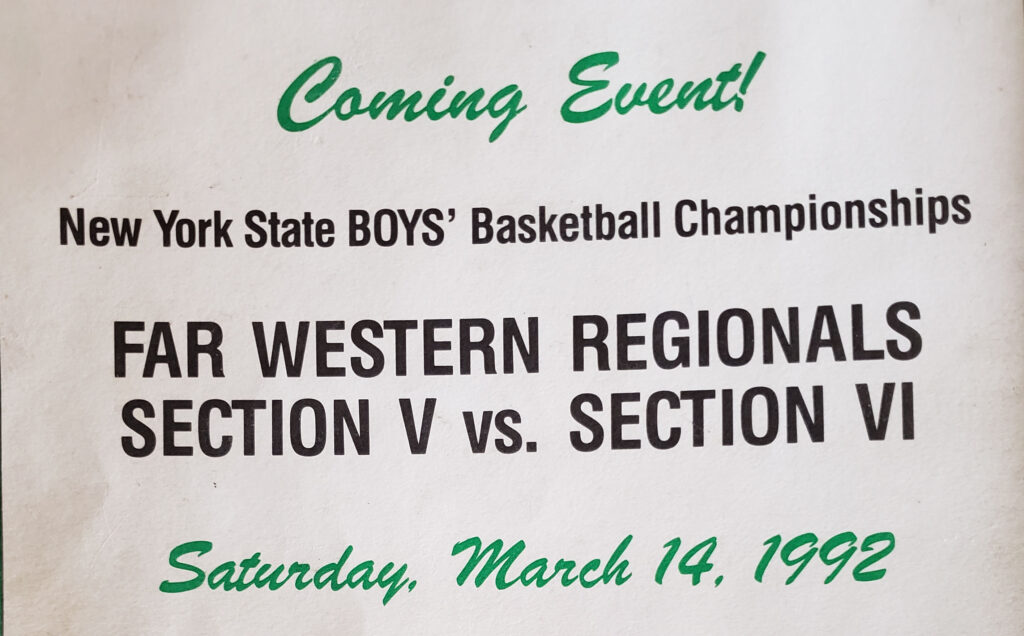
This was both pre-internet and social media. I also learned about John Wallace from Greece-Athena High School from Rochester late. I saw him play in the Far West Regional game against Niagara Falls LaSalle in my sophomore year at Hutch-Tech at the end of the 1991-92 season. Who was John Wallace? He was from our sister city Rochester, only an hour away and became the next Syracuse star after Derrick Coleman. He also wore the No. 44, probably in tribute to Derrick Coleman.
Just One of Many Great College Players in the Golden Age of Basketball
Derrick Coleman was just one of many highly talented Syracuse basketball players at that time. Dwayne ‘Pearl’ Washington, a wizard with the basketball was another one. There was also Sherman Douglass and Rony Seikaly. I was still new to basketball and did not know about them. I was wrapped up in the Michael Jordan craze and the bright lights of the NBA. As a result, I did not take a hard look at the college players, the best of whom would eventually make their way to the NBA. Mr. Amoroso did, and his favorite player was Derrick Coleman.
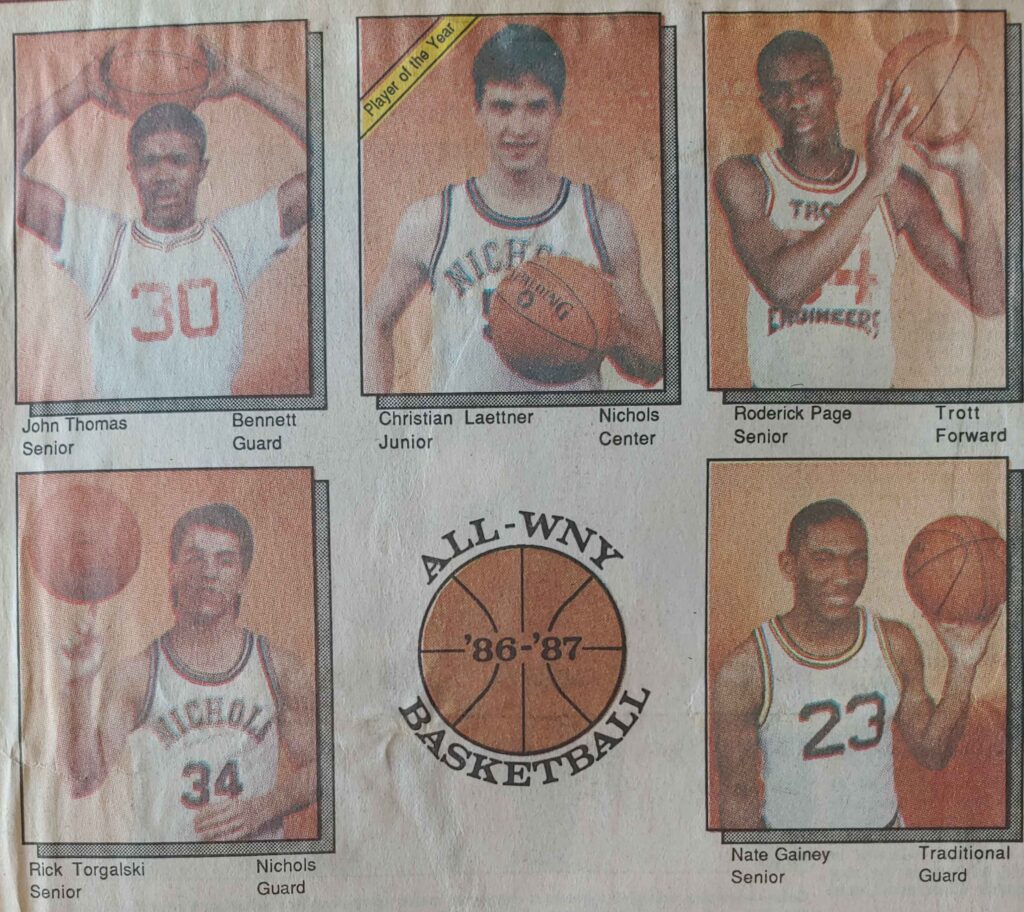
It is also worth noting that arguably the greatest college basketball player of all time, Christian Laettner was from our area. He recently finished his storied high school basketball career at the nearby Nichols School. He moved on to Duke University where he exploded onto the national scene. Cliff Robinson played at Riverside High School and went on to the University of Connecticut (UCONN) to play college basketball a few years earlier. He helped start the ascension of the program in the old Big East Conference.
I was unfamiliar with high school basketball in Western New York in general as described. I thus missed seeing Laettner play (and the South Park fight). I further missed seeing other great players play like Ritchie Campbell when I was at Campus West (pictured below with Carlin Hartman on the 1990 All-Western New York First Basketball Team). I will discuss this later. There also was not a lot of encouragement to do so though that I recall.
Craft Mastery

I am sharing all of this because it contributes to the mastery of one’s craft. Mastery of your craft involves at least partially watching the greats of your time and from past years. Basketball is no exception. Skills development and playing are critical too. But watching and studying is key as well. The college game was the next level up after high school before getting to the NBA. A family friend encouraged me to study the college game as I transitioned into high school. It was something I needed reminding of, but there were not any men around to do so. This underscores another key theme of my story, the importance of male figures for boys especially, and the importance of mentors.
How Did Other Kids in Western New York Learn the Game?
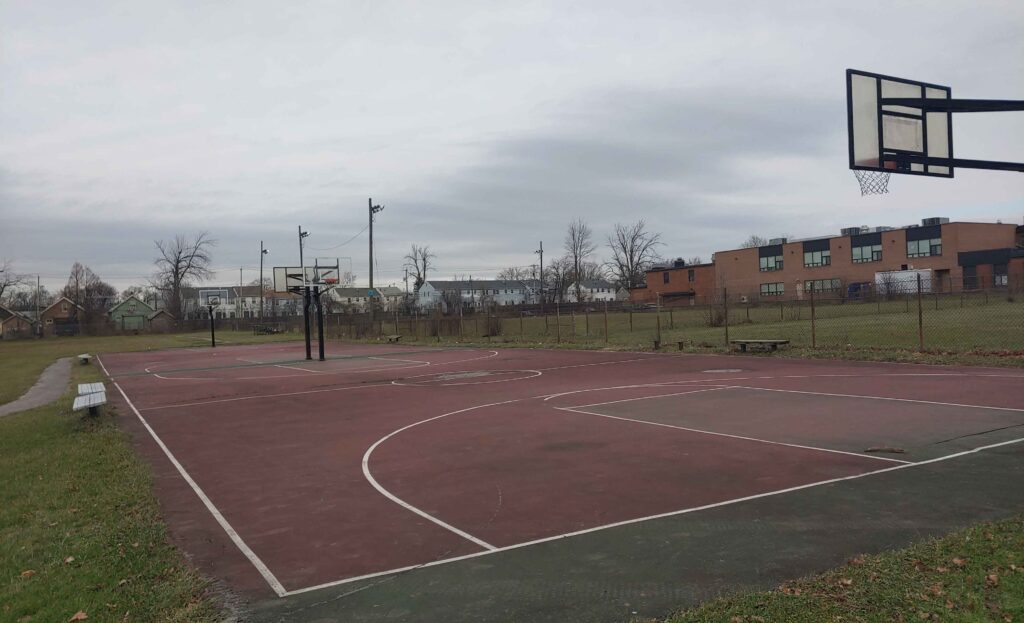
Some kids are born with natural attributes and abilities such as leaping ability, height and quickness. Mastery of any craft however requires honing a set of skills. The great game of basketball is the same way. Some kids in Western New York started their development early. My research for my book revealed how many of the more successful players in Western New York developed their basketball games. This development usually involved some sort of mentoring and or exposure to the game.
I also later observed that the great players developed outside of their academic schools. In the ESPN 30 for 30 The Fab Five, the producers showed footage of Jalen Rose playing and developing outside of his school. The same was true in the ESPN 30 for 30 Benji. Benji Wilson honed his game outside of school. This was long before winning the Illinois State Championship at Simeon Vocational High School and becoming the top high school player in the nation in 1984.
Mentoring in Basketball and Life
Many of the players I interviewed for The Engineers: A Western New York Basketball Story had mentors guiding them early. The late Kevin Roberson mentored Ronald Jennings from my teams. The same was true for the core of our 1990-91 Hutch-Tech Boys’ Basketball Team that won the Yale Cup and the Class B Sectional Championships. Chuck Thompson was one of those players.
Jason Rowe grew up in a basketball family. They taught him how to compete early in his life. The legendary Trevor Ruffin mentored Jason as well. Ruffin played Division I basketball at the University of Hawaii and played in the NBA. Jason Rowe and Damien Foster both got more mentoring in a bit of a basketball ‘dojo’ as described below. William Gates had his brother Curtis, and Arthur Agee had his father Bo in Hoop Dreams.
Training With the Best Players
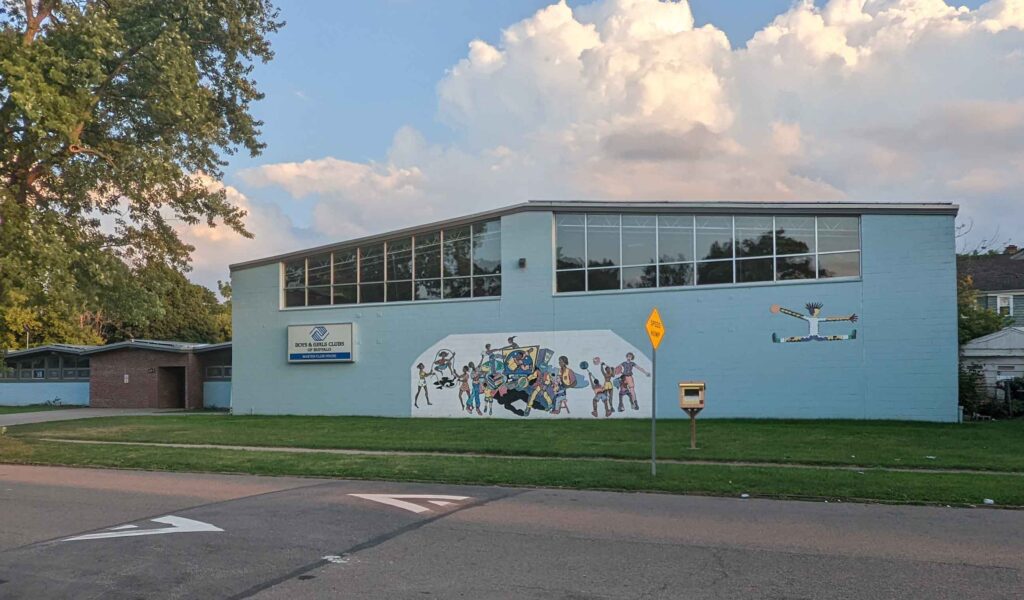
Some of the players I interviewed received mentoring and trained relentlessly at specific locations around their cities. Jason Rowe and Damien Foster described getting rigorous training and mentoring from multiple coaches and players at the Masten Boys’ Club. They played basketball there late on many Friday nights. I will repeat myself. They played late on Friday nights while other kids played video games, partied and did other things. This training accelerated their growth and mastery of the game. It further made them varsity prodigies when they got to Buffalo Buffalo Traditional in the 1992-93 season.
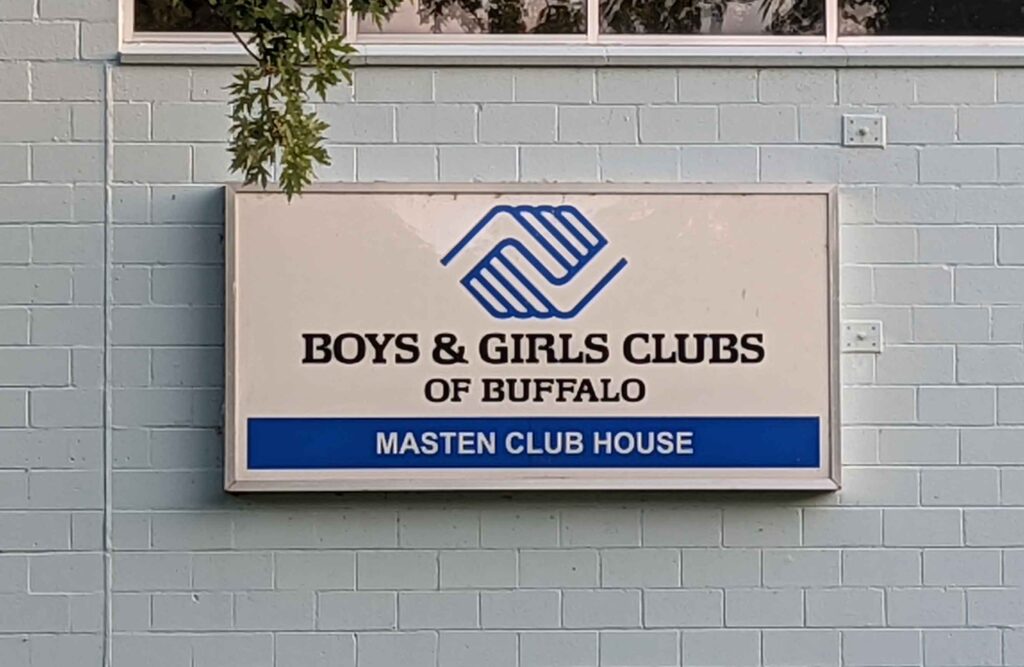
Tim Winn, Darris Thomas and other Niagara Falls players trained early in the Biddy Leagues at the YMCAs and other recreational centers in Niagara Falls. This is largely why the Niagara Falls teams became dominant in that era. Ryan Cochrane from Cardinal O’Hara gained considerable experience playing for his Central Park neighborhood team under his coach, Coach Dean. There were also several leagues around Buffalo such as the Bob Lanier and Randy Smith leagues, and church leagues.
The Bengal Tigers and the Campus West Gymnasium
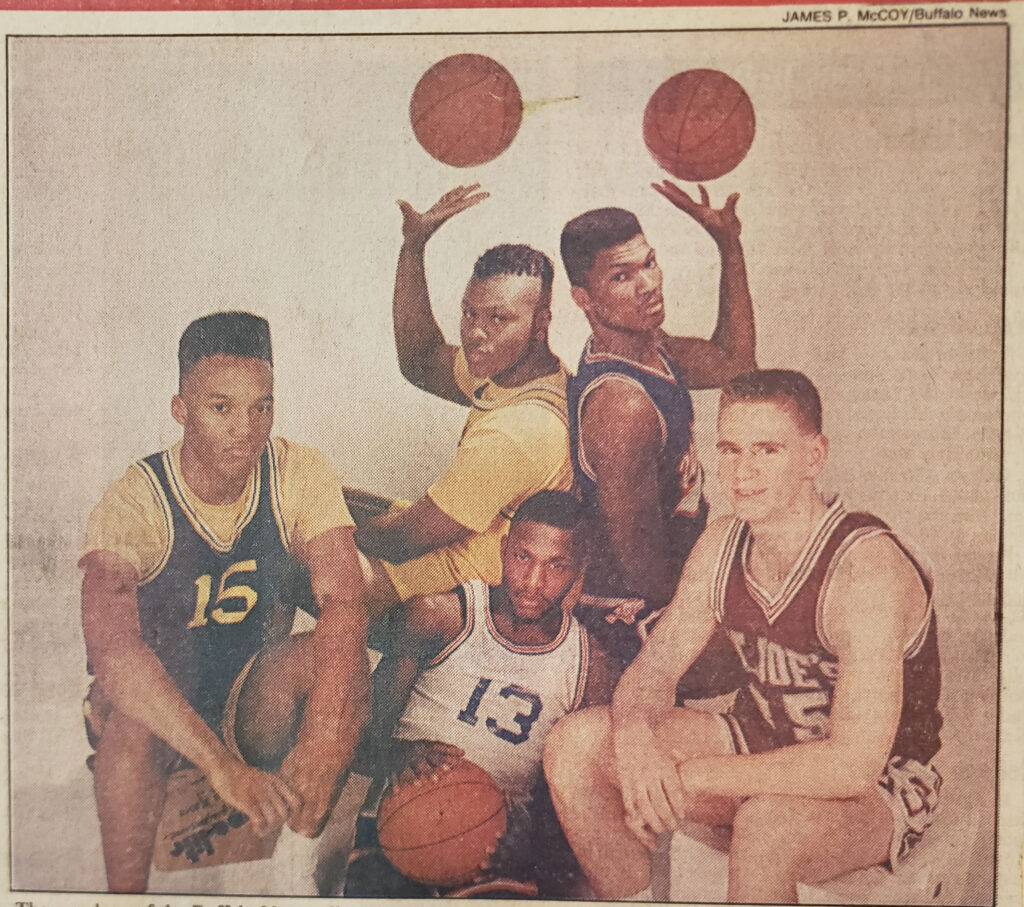
There was a long line of players who played for Mr. Cook before I became a Bengal Tiger. Each experienced varying levels of success at and beyond playing at Campus West. Carlin Hartman experienced tremendous success afterwards at Grand Island High School (pictured in the back row in blue). This essay keeps expanding, so I will list out the names that came up in my interviews with Dion Frasier and Quincy Lee in the comments section below. I will also shout out the guys I played with in my seventh and eighth grade years. If you know any of them, please pass this essay on.
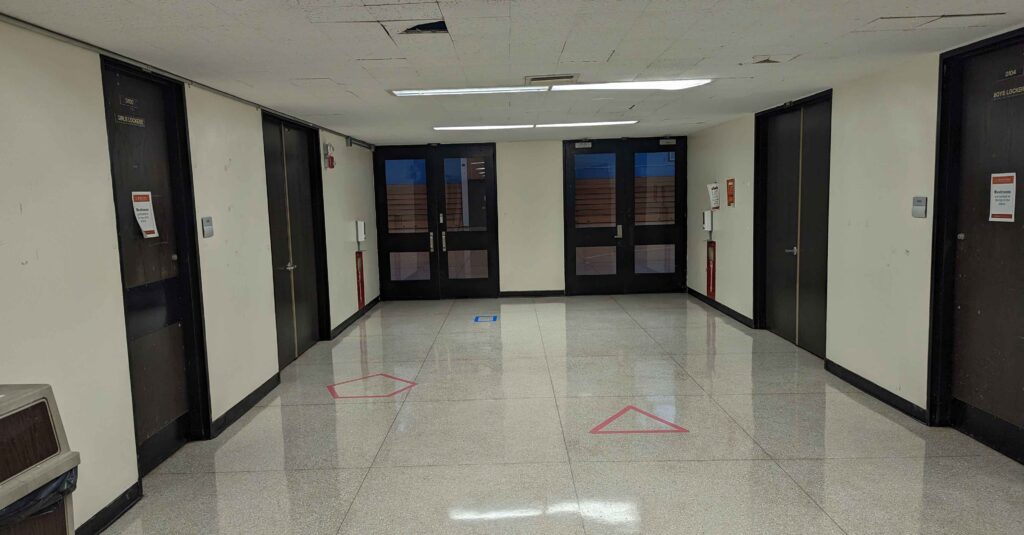
I captured the pictures of Campus West gym in this essay in a recent visit to Buffalo. I sought to take some pictures of that particular wing of the school and I saw two Buffalo State College undergraduates enter it after hours. I followed them in and went down the stairs to the gym just like old times. I thought I would only be able to take pictures of it through the glass doors, but one of them was partially open so I walked in for the first time in 30 years. Campus West is now the ‘Buckham Building’ or the ‘Buckham Campus’ and is just another college building on campus.
Starting Off as Basketball Player-Managers
I created this essay after the original batch of promotional essays for the book. The inspiration grabbed me as I was doing a final edit of The Engineers: A Western New York Basketball Story. Sometimes journeys start by chance and sometimes they start due to the generosity and mercy of someone else. Mr. Cook saw a chubby seventh grader who really wanted to be on the team and decided to make him a player-manager. That led to other things for me.
It is worth noting that some great players started off as managers or player-managers. No. 23 Michael Jordan’s sidekick No. 33 Scottie Pippen served as a manager at Central Arkansas University before his talent was realized. Pippen also became one of my favorite players as I watched Michael’s ascension. Pippen’s story along with others is example for young people that success is not always a straight line. Sometimes it is a winding road.

Closing Thoughts
Thank you for reading this essay. I was one of several of Mr. Cook’s players to go on to Hutch-Tech to play a little bit more. Others were the above-mentioned Chuck Thompson, the late Quincy Lee, Paul Saunders, Dion Frasier, and the late Jason Holman. Ronald Jennings played a little bit at Turner/Carroll High School. Jamel Brown played at Amherst High School. His Tigers defeated my Hutch-Tech team at the end of my tumultuous junior year. Many of the guys did not go any further with the game.

I mentioned the players by their real names in this essay for the sake of nostalgia and remembrance. If you purchase copies of the books, you will see that I have changed many of the names as they did not agree to be characters. Thank you to those who agreed to interviews and to being mentioned in the final story.
I think the lessons shared in this essay and my book project are important for people in general, but particularly for young men. Many struggle in our country today more so than is being discussed in larger arenas. Sports are more than just games that are played. There is a spirituality to them and they are microcosms of life as stated by Alice Jones, the wife of the late Coach Ken Jones.
The Big Words LLC Newsletter

For the next phase of my writing journey, I’m starting a monthly newsletter for my writing and video content creation company, the Big Words LLC. In it, I plan to share inspirational words, pieces from this blog and my first blog, and select videos from my four YouTube channels. Finally, I will share updates for my book project The Engineers: A Western New York Basketball Story. Your personal information and privacy will be protected. Click this link and register using the sign-up button at the bottom of the announcement. If there is some issue signing up using the link provided, you can also email me at [email protected] . Best Regards.
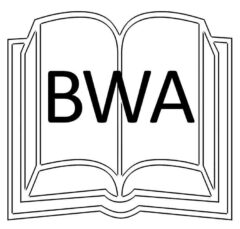
Hello all. Thank you for reading this promotional essay for my book project The Engineers: A Western New York Basketball Story. This essay is centered on the coaches, players and teams from Campus West but as with all of my writings, the themes are broad apply in other arenas. This was not among the original batch of promotional essays I created, but it is a critical work.
I am going to shout out the players on my two teams at Campus West first. Forgive me if I forget anyone. There was Ronald Jennings, John Barron, Marcus Perkins, Basheer Cross, John Restivo, Vincent LaGrange, Jackie Crouch, Paris Wardlaw, Patrick Clarence Miles, Jason Holman, Jose Arroyo, Muhajer Alwakeel, Jermaine Jennings, Josh Adamczyk and Corey McCallister. If I have forgotten anyone, please let me know.
Players who came up during my discussions with Dion Frasier and Quincy Lee included (aside from themselves): Carlin Hartman, Tremaine Hardin, Darius McClamb, Dion Frasier, Chuck Thompson, Paul Saunders, Taj Collins, Colin Rhodes, Douglass Croom………..Please share other names if you recall guys that I do not.
In the 1990 All-Western New York Team photograph, Carlin Hartman is pictured with Chris Williams (Buffalo Traditional), Duke Davis (LaSalle), Chris Sprigg (St. Joe’s) and the great Ritchie Campbell (Burgard).